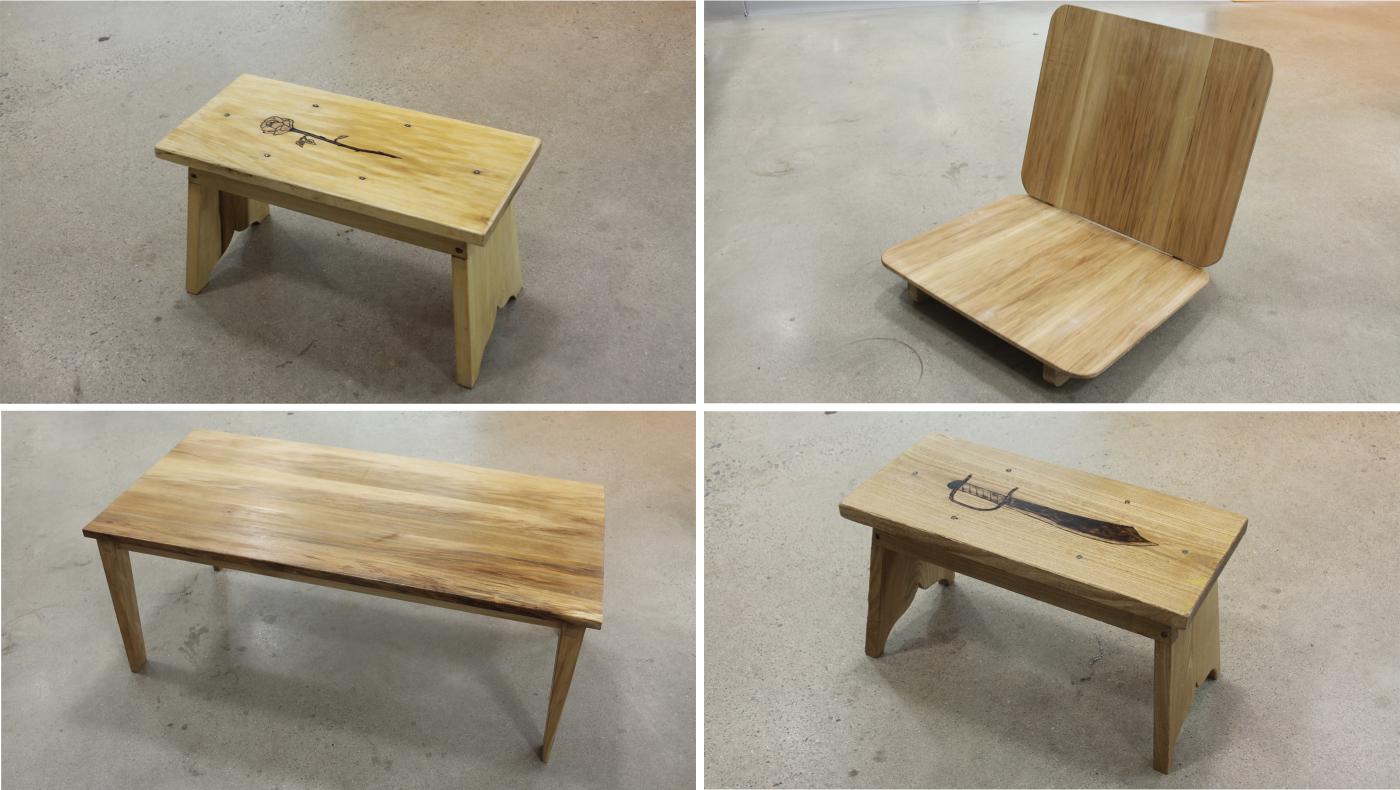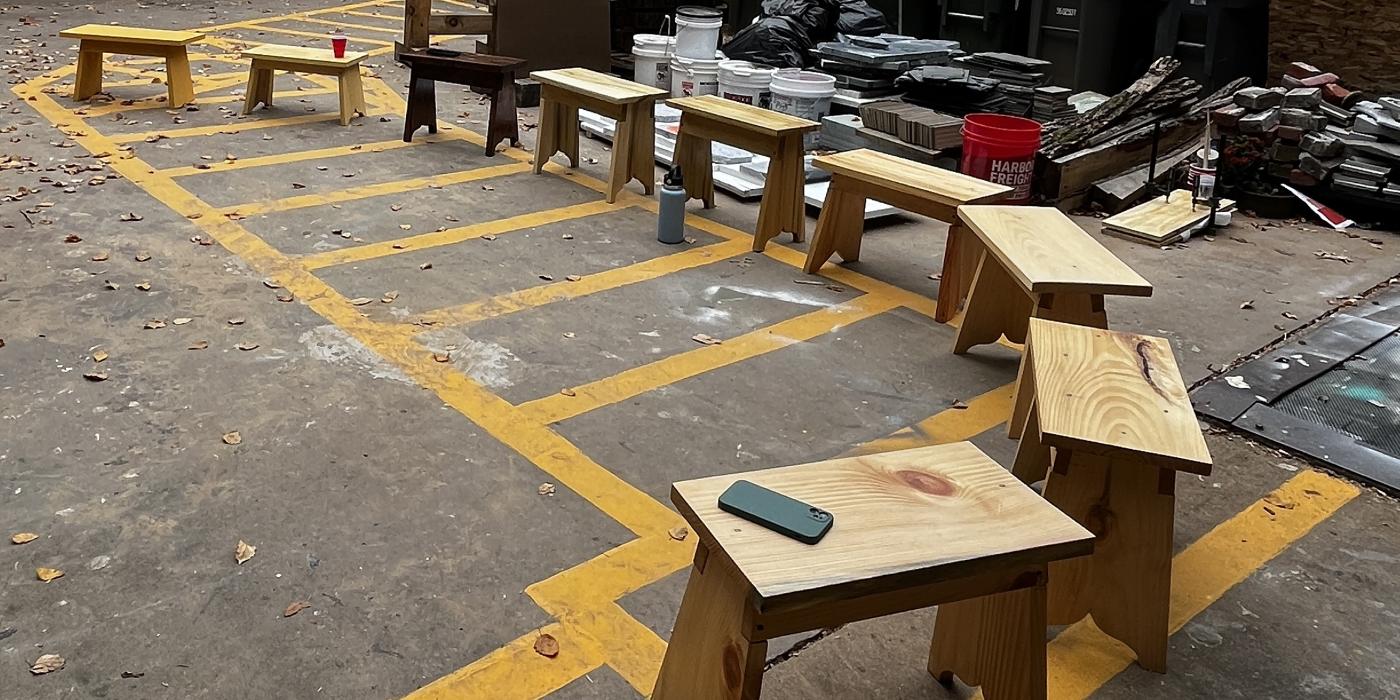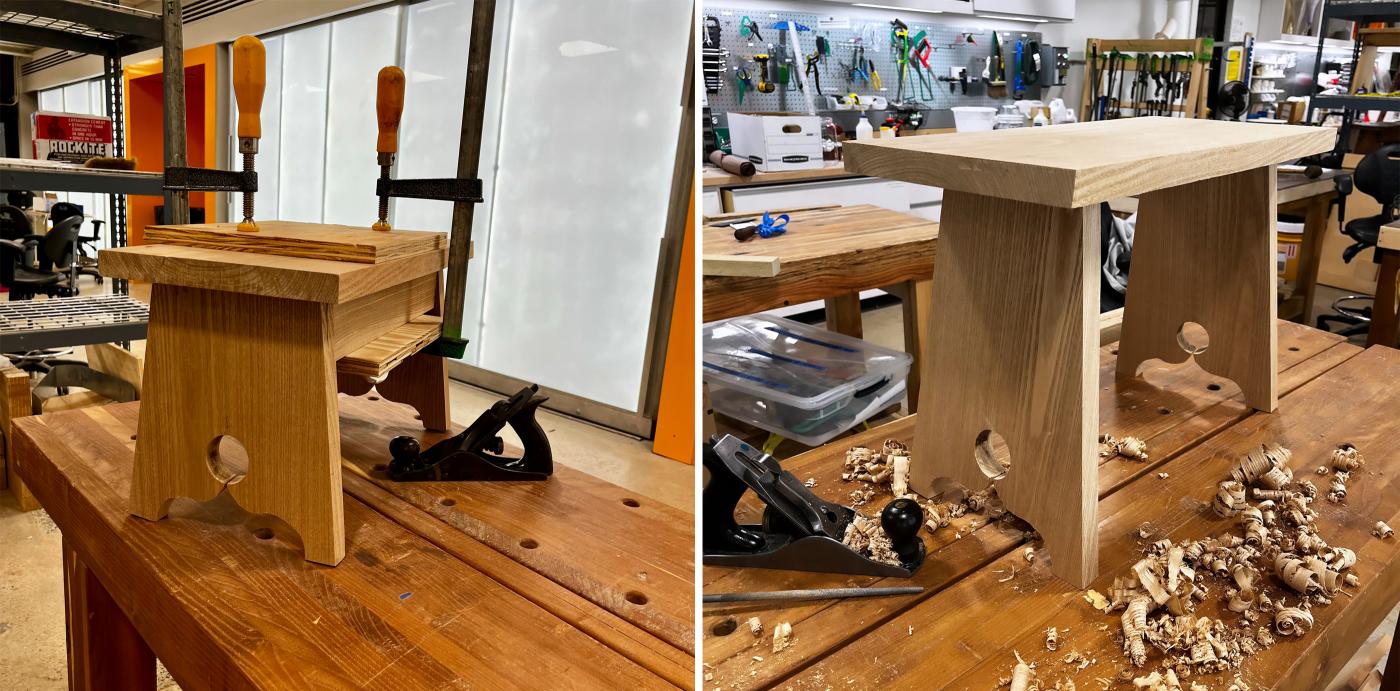
Students Ammon Embleton and Jeffery Holley receive scholarships for their study of material craft and history
Two School of Architecture students were recently awarded scholarships by The Colonial Williamsburg Foundation to attend a national conference focused on new woodworking techniques derived from 18th century traditions. Ammon Embleton (MArch ’24) and Jeffery Holley (BArH ’24, MArH ’25) were invited to present their work at the 26th annual “Working Wood in the 18th Century” conference with a theme this year of “By the Book.”
Sharing projects from the Materials and Culture course taught by Andrew Johnston and Mark Kutney, Embleton and Holley explored embodied knowledge in craft through hands-on study of traditional woodworking techniques.

Embelton’s project titled Furniture, Community and Hands-on Preservation resulted in the construction of two Spanish Mission Style benches and a companion piece, an art table. Additionally, Embelton utilized the offcuts and leftover materials from these pieces to create a chair, more specifically, a ground lounger. During the process Embelton used hand tools, starting off using jigs to ensure straight cuts and accurate angles, but evolving over the making process to rely on just working the wood by hand, without additional set-up.

At the conference Holley presented From Log to Bench: Learning Colonial-era Woodworking Skills, highlighting the unique student outcomes of varied bench designs that used vintage and rare-hand tools. He also shared insights from his thesis on “Maker Spaces and Gender” that investigates the influence of DIY woodworking on American societal changes and gender roles from the late 19th to early 20th century.
Describing the Materials and Culture class, Embleton shared, “[The class] often [is] referred to by students as ‘The Bench Class,’ but there is so much more to it than that. We learned of the cultures and histories that influence craft and even individual journeys of craft-persons. Learning these things while concurrently constructing benches utilizing traditional skill sets helped instill within me a deeper appreciation for the craft.” Holley agreed, noting, “The class went beyond just building a bench. We had thoughtful conversations considering forestry and the connection between crafting and nature.”

The class and the conference also allowed both students, who are also pursuing the historic preservation certificate, to further reflect on craft, through the engagement with professionals in the field. Holley said, “I realized that, regardless of expertise level, the crafting process remains a constant negotiation of judgment, skill, material variability, and the art of correcting mistakes, underscoring the universal human connection to the act of making.”
Sharing their coursework with an audience outside the classroom inspired a deep appreciation of craft culture, an investment that Embleton describes as transformative — turning “woodworking from a fun hobby into a design component within my work as an architect.”


